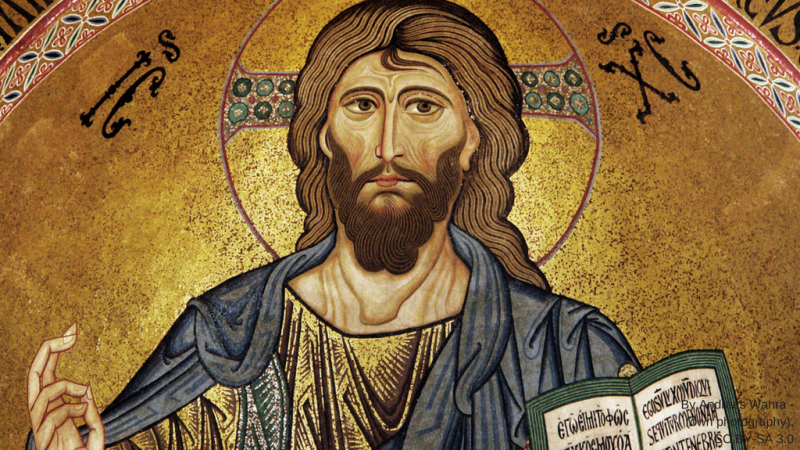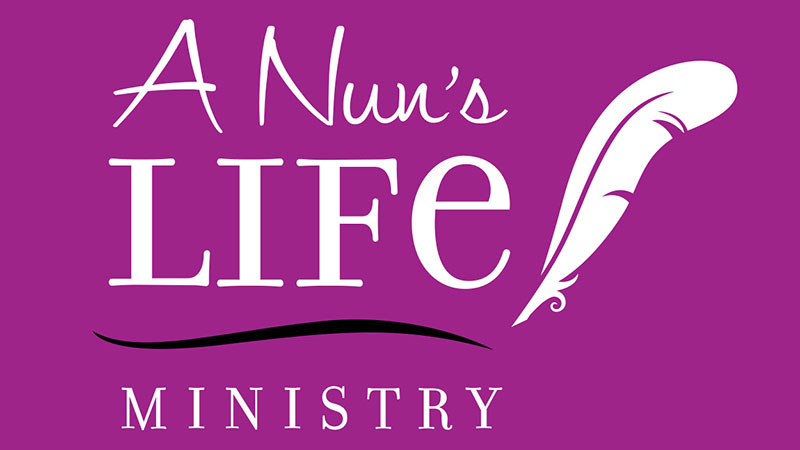 Reflect:
Reflect:
Part 1 Conception, Birth, Public Ministry
As Catholic Christians most of what we have come to believe about the life and times of Jesus of Nazareth has been the result of the scholarly study of Sacred Scripture. Even though a number of non-scriptural historical documents have been studied as well, canonized scripture has been by far the major source used when putting together a portrait of Jesus. Early church councils and resulting creeds have outlined what is now believed about Jesus.
Jesus' conception and birth
The gospels of Matthew and Luke contain similar accounts of the conception and birth of Jesus. These events are not mentioned in the gospel of Mark. The gospel of John deals with such beginnings in a completely different way. Matthew and Luke tell us that Mary, a young Jewish woman is the mother of Jesus. Mary was betrothed to Joseph when the angel Gabriel visited her, and told her that she would conceive and give birth to a son even though she was still a virgin. That son would be named Jesus and he would be conceived by the power of the Holy Spirit and would not have an earthly father. Even though perplexed and somewhat confused by the proclamation, Mary believed and consented to being a part of this miraculous event (Matthew 1:18-25, Luke 1:26-38).
Jesus was born in Bethlehem, not in the town of Nazareth, where the couple lived, because of a decree that went out from Emperor Augustus that everyone had to go to their hometown to be registered. Joseph, Mary’s husband, had to go to the city of David called Bethlehem because he was descended from the house and family of David. While they were in Bethlehem Mary gave birth to Jesus in rather humble surroundings because all of the inns were filled because of the large influx of people in town for the census taking (Matthew 2:1-12, Luke 2:1-20).
Jesus human and divine
The gospel of John looks at Jesus through a different lens, one that stresses His divinity. Jesus is described as the eternal Word of God, as being equal to God and, indeed, is God.
“In the beginning was the Word, and the Word was with God, and the Word was God. He was in the beginning with God. All things came to be through him, and without him nothing came to be.... And the Word became flesh and made his dwelling among us, and we saw his glory, the glory as of the Father’s only Son, full of grace and truth." (John 1:1-3,14)
Throughout the gospel of John, Jesus is portrayed as being in control at all times. He allows himself to be crucified. In the other three gospels Jesus is depicted as possessing all of the frailties of a human being, except sin. Studied as a whole, the gospels give us a complete portrayal of Jesus as one who is both human and divine.
The understanding of how Jesus could possess two complete natures is a different concept to comprehend. It led to a number of misunderstandings in the early church, called heresies. The teaching became a doctrine of the church at the Council of Chalcedon in 451. The Chalcedonian Creed asserted two distinct natures, human and divine, and affirmed the one person of Jesus Christ.
Second person of the Trinity
 The equally difficult doctrine of the Trinity was established in 325 at the First Council of Nicea. This doctrine teaches that God is one, but that three distinct "persons" constitute the one God: the Father, the Son, and the Holy Spirit. Jesus, as the Son, is the second person of the Trinity. The word "Trinity" is not found in scripture, but is alluded to a number of times. The Father, the Son and the Holy Spirit are mentioned in scripture numerous times both individually and together. One example can be found in Matthew 28:19-20 when Jesus says to his disciplines, “Go therefore and make disciples of all nations, baptizing them in the name of the Father and of the Son and of the Holy Spirit, and teaching them to obey everything that I have commanded you. And remember, I am with you always, to the end of the age.”
The equally difficult doctrine of the Trinity was established in 325 at the First Council of Nicea. This doctrine teaches that God is one, but that three distinct "persons" constitute the one God: the Father, the Son, and the Holy Spirit. Jesus, as the Son, is the second person of the Trinity. The word "Trinity" is not found in scripture, but is alluded to a number of times. The Father, the Son and the Holy Spirit are mentioned in scripture numerous times both individually and together. One example can be found in Matthew 28:19-20 when Jesus says to his disciplines, “Go therefore and make disciples of all nations, baptizing them in the name of the Father and of the Son and of the Holy Spirit, and teaching them to obey everything that I have commanded you. And remember, I am with you always, to the end of the age.”
The childhood and young adult life of Jesus
Little is known about the first 30 years of Jesus’ life. The gospels are all but silent. One exception is the story of the boy Jesus in the temple for three days teaching the elders with great maturity and wisdom as his distraught parents searched for him (Luke 2:41-51). It is believed that he lived in obscurity as a carpenter, the trade of his “father” Joseph. Prior to the beginning of his public life, Jesus was baptized by John the Baptist, his cousin and forerunner. This event is recorded in the gospels of Matthew, Mark and Luke. John the Baptist proclaimed baptism as repentance for the forgiveness of sins. While John baptized with water he proclaimed Jesus as one who would baptize “with the Holy Spirit and with fire" (Luke 3:16). At the baptism of Jesus, the heavens open and the Holy Spirit descents like a dove as a voice proclaims, "This is my beloved Son, in whom I am well pleased” (Luke 3:22).
Jesus' public ministry
Jesus’ public ministry was thought to be no more than 3 years. During this time Jesus attracted much attention. He had a great many followers and detractors. His inner circle of friends, known as the 12 apostles, were a motley group that included fishermen, a tax collector, a Zealot, and one who would come to betray him. Jesus was a preacher, teacher and healer during his short time in public ministry. He traveled from town to town gathering increasingly larger crowds of people as word of his great works spread. A large following of men, women and children also accompanied Jesus on his journeys. Most of Jesus’ adherents and supporters were among the poor. Jesus’ radical message filled them with hope and consolation, but it filled the wealthy and powerful with indignation and outrage.
The common belief of that time was that those who were wealthy, beautiful and healthy deserved the “good life” because of their goodness and the goodness of their parents and grandparents. On the other hand, these who were poor and miserable also deserved what they got because of some sin possibly committed by their parents, grandparents or an unknown ancestor. These erroneous beliefs gave the ruling class an acceptable excuse to abuse and exploit the poor without guilt or remorse. Jesus’ message turned this thinking upside down and threatened to upset the status quo. Not only did he say that the poor did not deceive to be poor, but he blamed the wealthy for the suffering of the underclass. He accused the wealthy and powerful of exploiting the poor for their own personal gain. These who held the power would not give up the reins without a fight, so Jesus had to be silenced. Jesus’ courage in his refusal to back down from this stance ultimately led to his crucifixion.
Continued in Catholic Faith Series: Jesus the Christ Part II.
Consider:
The power of words:
- Jesus is the Word of God made flesh and sent to dwell among us.
- Jesus’ words changed the world.
- Words can cut or heal.
Today I will use my words to bring about unity, not division.
Today I will look for an opportunity to comfort and support another person with my words.
Today I will use my words with discretion, not indulging in gossip or idle chatter.
Question:
- What was unique about the conception and birth of Jesus?
- Describe the two natures of Jesus?
- Why did Jesus’ ministry outrage the religious leaders and ruling class among the Jewish people?
Pray:
Eternal Word, God among us
Help me to use my words to
comfort the lonely,
defend the oppressed
speak the truth
and to praise your holy name.
Amen.


